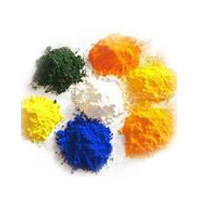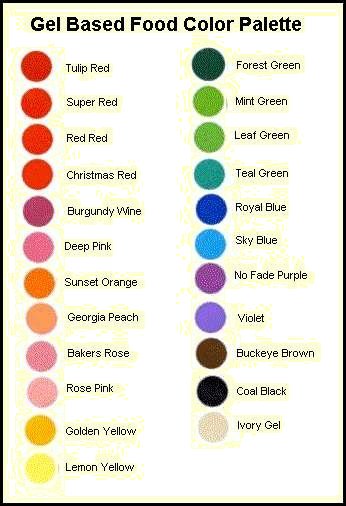Lake food colors - popularly known as lakes - are one of the two food color additives (the other being dyes.) Lake colors are very popular synthetic food color. In fact, lake colors are not only used for foods but are also used in a variety of other industries like pharmaceuticals, cosmetics, inks, plastic food containers etc. Lake food colors are essentially pigments - popular as lake pigments - as their coloring is achieved by dispersion of colors that have different concentrations. Lakes are available in a wide array of colors.
There are two types of food colors- food dyes and lake colors. There is difference between dyes and pigments lake based upon their property of solubility.

Food Dyes: Dyes are water soluble. They are not oil soluble. They are manufactured as powders, granules, liquids or other customized forms and can be used in beverages, dry mixes, baked goods, confections, dairy products, pet foods, and a host of other products. Food dyes may have certain side effects that can be visible too (large amounts of dyes ingested can color stools.) Lake colors are not known to have any side effect.
Lakes: Lake colors are basically are made by combining dyes with salts to get insoluble compounds. Lake colors tint by dispersion. Lakes too are not oil soluble but are oil dispersible. Lake food colors are more stable than food dyes. Lakes are ideal for coloring food products containing fats and oils or stuffs lacking sufficient moisture to dissolve dyes. Lake colors are typically used to make coated tablets, cake and doughnut mixes, hard candies and chewing gums, lipsticks, soaps, shampoos, talc, etc.
Lake food colors are popular due to their many characteristic features.
Lake colors are highly adaptable and versatile: Lakes are comparatively inert absorption compounds and therefore are highly versatile and adaptable. Lake colors can also be dispersed in suspension of propylene glycol or sucrose.
Lake colors are stable: Lake colors are more stable than water-soluble colors. Owing to their good soluble properties, lake colors can be employed to color an infinite variety of products and hence are widely used in cosmetics and pharmaceuticals. They are also available in different concentrations of colors.
Lake colors are oil soluble: Lake colors are oil-soluble and can be mixed in vegetable oils, fats, other cosmetic oils etc
Lake colors are available as both- natural food colors as well as synthetic food colors. The artificial food colors are commonly reviewed by government health and safety agencies for its suitability for use in food. Natural colors are obtained from natural sources like plants, herbs and spices etc. The two commonly discussed lake colors include organic organic lake pigments and aluminum lake colors.
Organic lake pigments are natural food colors. Some of the examples of organic lake pigments include:
Read the article Natural Food Dyes & Artificial Food Colorings
Aluminum Lake is a typical blue color additive. It is commonly used as blue pill coatings and many other foods and drugs and also for blue eye make-up products. Aluminum lake color is not the same as elemental aluminum. Name of any lake color is derived from the name of the color additive combined with the name of the basic radical and the word "Lake". For example, the name of the lake prepared by extending the aluminum salt of FD&C; Blue No. 1 upon alumina would be FD&C; Blue No. 1 - Aluminum Lake. The alumina apparently acts as a vehicle or carrier for the dye.
The most frequently used food colors worldwide include Tartrazine, Sunset yellow, Allura Red, Amaranth, Carmoisine, Ponceau 4R, Erythrosine, Brilliant Blue, Indigo Carmine etc.
Detailed description of widely used lake colors are as follows:
